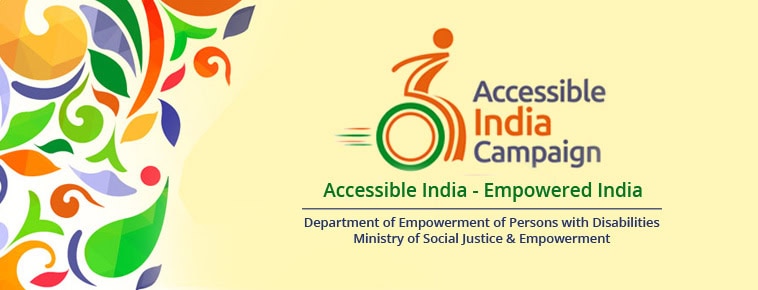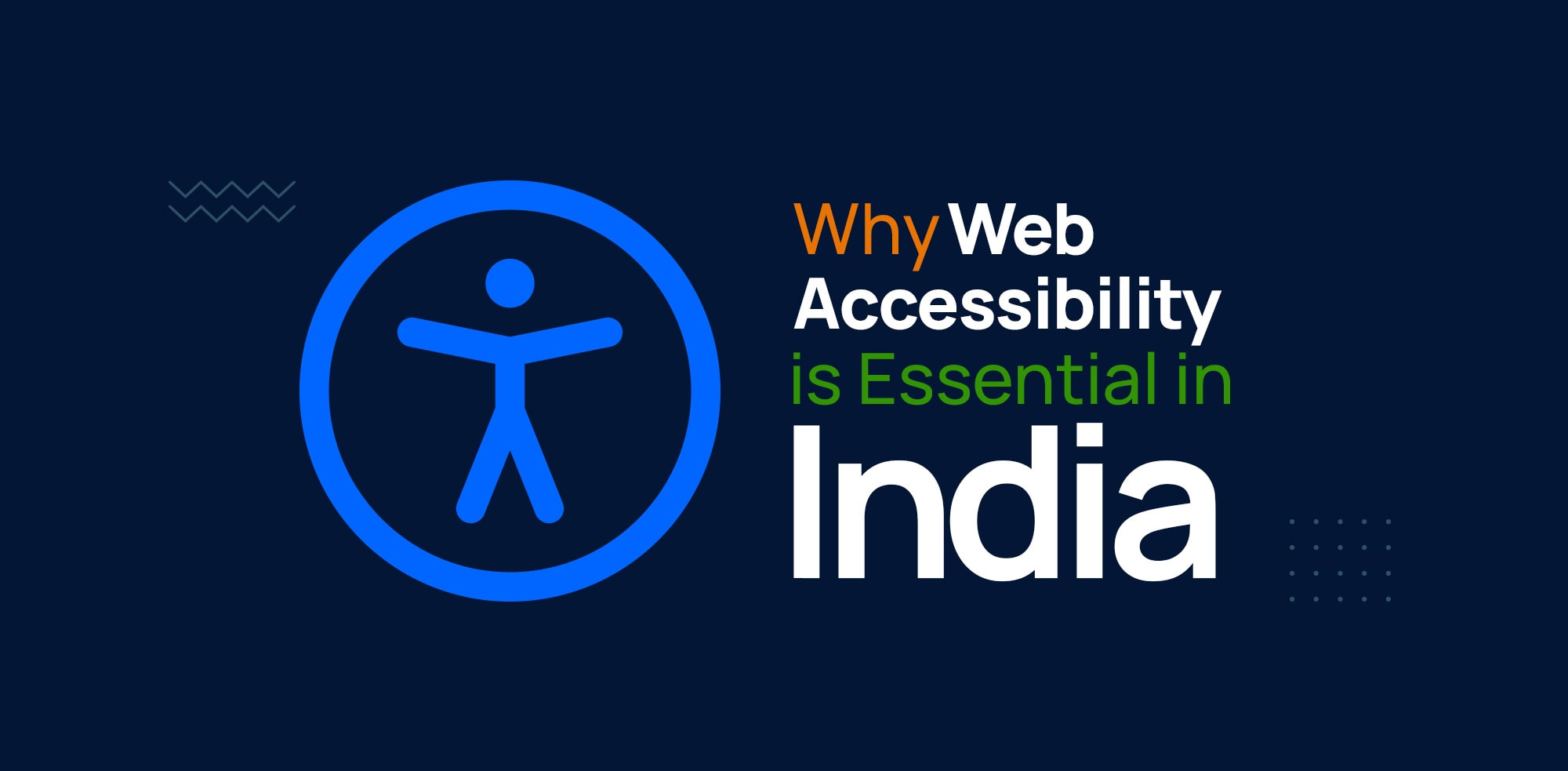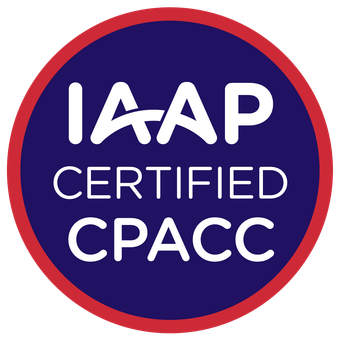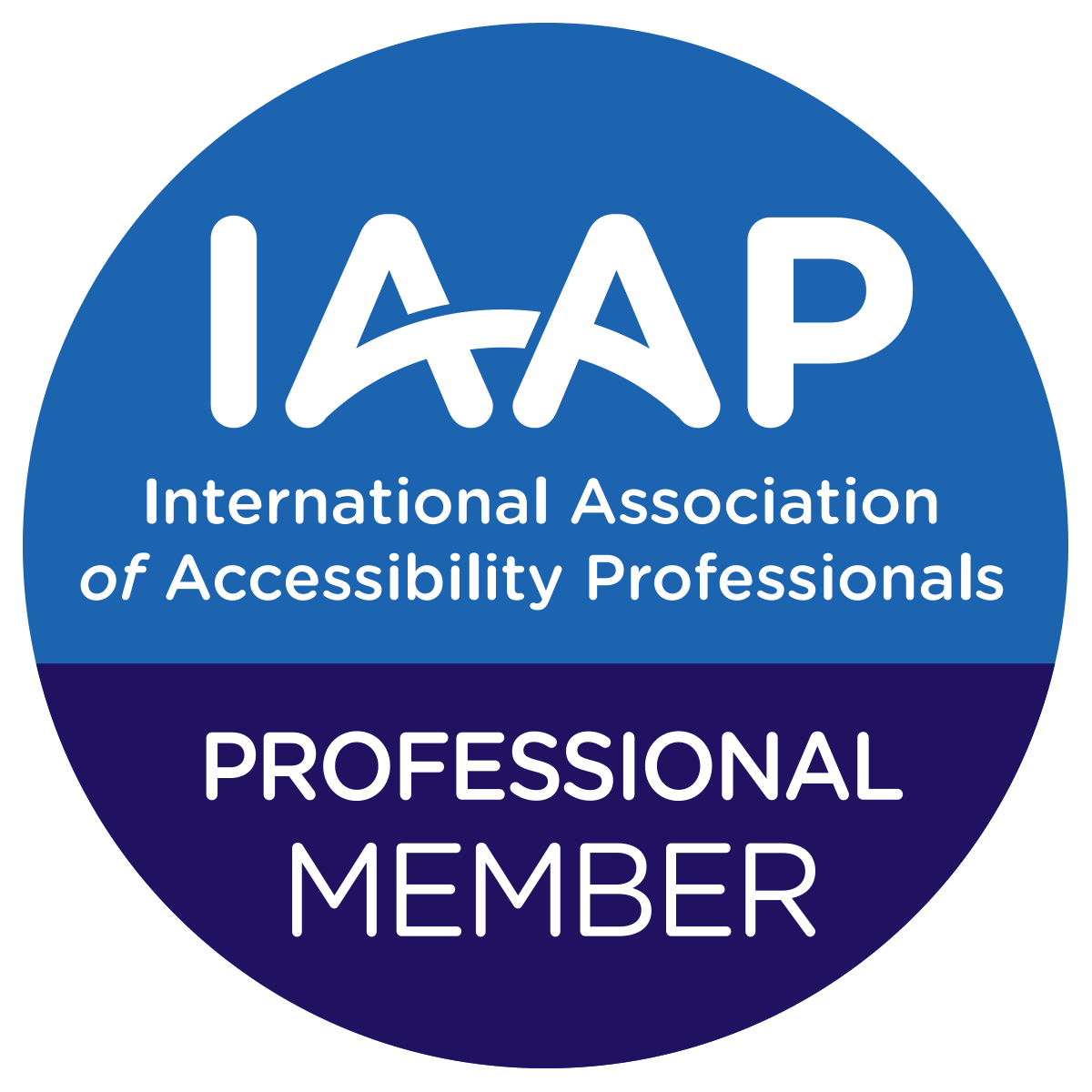Web accessibility means designing websites and apps usable for people with disabilities. It must allow people to perceive, understand, navigate, interact with, and contribute to the Web. Disabilities are mainly classified as auditory, cognitive, neurological, physical, speech, and visual.
Accessibility techniques can help people with disabilities and situational disabilities like support mobile device users, older adults (65 years and above) with age-related changes, people with temporary disabilities like a broken arm or lost glasses, people in bright sunlight or noisy environments, users with slow or limited internet connections.
Implementing accessibility is essential to provide equal access and equal opportunity to people with diverse abilities.
Key Principles of Accessibility
Web accessibility is defined in terms of four main principles. They are:
Perceivable
Perceivable means providing alternative text for non-text content. It is essential for people with visual disabilities. A simple example is adding alt text to images. This conveys the purpose of the image. It also includes text transcripts and captions for audio content, audio descriptions, which describe the elements of the video, and Sign language interpretation of audio content, including relevant auditory experiences.

Operable
Operable ensures that all user interface components, such as form inputs, search forms, and website functionalities, are accessible through the keyboard. All features should be accessible with a mouse and a keyboard, and no keyboard traps (keyboard user cannot move focus away from an element) should be there. Also, users should get enough time to read content and be able to control, pause, stop, or hide any animation on the website.
Understandable
Understandable means the web content must be readable and easy to understand. It mainly includes identifying the primary language of the website, understanding the language of the content, and using clear and simple language throughout the site.
Robust
Create content compatible with different browsers, assistive technologies, and user agents. It ensures maximum compatibility with assistive technologies.
Why is Accessibility an Important Part of Business?
Accessibility can highly impact various fields, including education, employment, government, commerce, healthcare, and more. Accessibility plays a major role in business by being accepted by a global audience. Accessible designs strengthen your brand, expand your reach, improve product usability, and minimise the risk of future legal issues.
1. Legal Compliance
Many countries across the globe have laws and regulations that require websites to be accessible to people with disabilities. In the U.S., the Americans with Disabilities Act (ADA) makes sure that businesses make their websites accessible. Non-compliance can lead to legal action and financial penalties.
2. Global Audience Reach
Making a website accessible helps everyone, including people with disabilities. This expands the number of customers, as around 15% of the world’s population lives with some form of disability.
3. Improve Your SEO
Many accessibility practices come up with best practices for search engine optimisation (SEO). For example, providing alt text for images helps screen readers and improves image search rankings. It can lead to better visibility and higher traffic from search engines.
4. Enhanced User Experience (UX)
An accessible website provides an amazing user experience. Features such as clear navigation, readable fonts, and brief content can make a site easier to use for all visitors, regardless of disabilities.
5. Financial Benefits
Accessibility can boost sales and revenue by reaching a larger audience. Accessible websites perform much better due to their user-friendliness and efficient design, resulting in higher conversion rates.
6. Innovation and Differentiation
Focusing on accessibility can seek new ways to meet the needs of all kinds of users. Working on Accessibility can differentiate a company from its competitors, making it stand out in a wide market.
7. Employee Productivity and Inclusion
Ensuring that internal working tools are accessible can improve productivity and job satisfaction for employees with disabilities. It gives a more flexible workplace and improves internal strength.
For businesses in India who wish to comply with global standards and avoid lawsuits, our Website Accessibility Audit by certified WCAG auditors will ensure strong adherence to the latest accessibility guidelines.
Interested in Accessibility Testing & Remediation?
Get In TouchWCAG Guidelines of Accessibility
The Web Content Accessibility Guidelines (WCAG) 2.2, developed by the World Wide Web Consortium (W3C), are international standards for making web content accessible to people with disabilities. As the degrees of disability may vary from one person to another, WCAG specifies three levels of conformance: A (lowest), AA and AAA (highest). Each level has a different way of presenting the web content.
Important Accessibility Laws
- In Europe, two main laws are the European Accessibility Act (EAA) and EN 301 549. The latter also known as the European Union’s Web Accessibility Directive, orders that all public sector websites and mobile apps meet WCAG 2.1 Level AA standards.
- In Germany, there are two primary accessibility laws: the Disability Equality Act (BGG) and the Federal Ordinance on Barrier-Free Information Technology (BITV). Also, the Barrier-Free Reinforcement Act (BFSG) will come into force on June 28, 2025.
- In the USA, important accessibility regulations include the Americans with Disabilities Act (ADA) and Section 508, which avoid discrimination against disabled people in all public areas, including employment, education, and transportation.
- In the UK, the Equality Act of 2010 prohibits discrimination against people with disabilities. Regulations in the Public Sector Bodies (Websites and Mobile Applications) (No. 2) The Accessibility Regulations 2018 require public sector bodies to comply with the WCAG 2.1 AA. Further, the government has specified the international “BS ISO 30071-1 standard” to improve accessibility.
Accessibility laws in India
- The Information Technology Act, 2000: This law addresses the digital world, ensuring that websites and apps are accessible for people with disabilities.
- India implemented Web Accessibility Guidelines for government agencies in 2009 to follow WCAG 2.0 Level A standards. The Ministry of Electronics and Information Technology (MeitY) released the “Model Website Accessibility Policy” for government websites, highlighting the importance of accessible design and development.
- The Rights of Persons with Disabilities Act, 2016: This law ensures everyone can access public spaces, transportation, and digital resources, regardless of their abilities. It focuses on the importance of following accessibility standards and guidelines.
- Amendments to the Rights of Persons with Disabilities Act: In 2023, the Government has updated the Rights of Persons with Disabilities Act to improve accessibility in more public places and online. This change responds to new technologies and establishes new rules to ensure compliance. A key part of this update requires websites to follow specific content guidelines, making them usable and understandable for everyone, including people with disability.
Importance of Accessibility in India
- Proving Equal Access to Information: These laws ensure that individuals with disabilities, mainly visual disabilities, have the same access to information as those without disabilities.
- Accessibility laws like ‘Rights of Persons with Disabilities Act, 2016’, define the timeline for service providers to ensure accessibility. Noncompliance may cause penalties as well as legal issues.
- The main challenge in making accessibility in India is the shortage of accessible technology and tools in the Indian market, making it difficult for developers to create accessible digital content and services.
- Government Programs: The government introduces various programs to enhance the accessibility initiative like the Accessible India Campaign and guidelines like GIGW 3.0 (Guidelines for Indian Government Websites).

- We need a unified approach and a strong authority to monitor accessibility norms. Introducing clear and precise legislation would help the Ministry of Social Justice achieve the goal of equality for people with disabilities.
List of WCAG-Compliant Websites in India
1. National Informatics Centre (NIC):
The NIC provides IT support to the Indian government and ensures its website meets accessibility standards.
View the Website: NIC
2. Indian Government Portal:
This is the National Portal of India, designed to provide unique access to information and services provided by the Indian Government.
View the Website: India.gov.in
3. Digital India
A flagship program of the Government of India with a vision to transform India into a digitally empowered society and knowledge economy.
View the Website: Digital India
4. Unique Identification Authority of India (UIDAI)
This website for Aadhaar services is designed to be accessible and user-friendly.
View the Website: UIDAI
5. Reserve Bank of India (RBI):
The official website of India’s central banking institution follows accessibility guidelines to ensure inclusivity.
View the Website: RBI
6. Indian Institutes of Technology (IITs):
Websites of various IITs are designed to be accessible to students and faculty with disabilities.
View the Website: IIT Bombay
Penalty for Non-compliance with the Rights of Persons with Disabilities Act (RPWD)
- For the first offence, the penalty may be higher than INR 10,000 (around 120 dollars).
- Following the offence, the penalty may be between INR 50,000 and INR 5 lakh (around 600 to 6000 dollars).
Moreover, continuous failure to comply with the accessibility standards can lead to legal actions and further penalties, emphasising the importance of ensuring websites are accessible to all users, including those with disabilities.
Rights of Persons with Disabilities Act (RPWD) Deadline
The deadline for becoming accessible was in June 2019, and websites that remain non-compliant are now potentially subject to the penalties specified above.
Bottom Line
- India is making significant progress towards making the web accessible to everyone, including people with disabilities. Laws like the Rights of Persons with Disabilities Act, 2016, and campaigns such as the Accessible India Campaign show that the government is serious about this issue. There is still a lot of effort needed to make sure people get the benefits.
- To achieve this, we must educate people about the importance of web accessibility and provide proper training for developers. Companies and organisations must also commit to making their websites and online services easy to use for everyone.
- It means following international guidelines like the Web Content Accessibility Guidelines (WCAG) and regularly monitoring and updating websites to meet accessibility standards.
- By focusing on these areas, India can create a digital world where everyone, regardless of their abilities, can participate fully. This improves the lives of many people and sets a strong example for other countries. Achieving true web accessibility will help build a more fair and inclusive society.

References:
https://guidelines.india.gov.in/introduction/
I am a web developer, Shopify expert, and IAAP Professional member at Sweans Technologies Pvt Ltd with over 12 years of experience. As an Accessibility Expert, I specialize in building high-quality, accessible websites and web applications, ensuring compliance with web accessibility standards. I have worked on various projects, including UK government sites, leveraging my expertise in Shopify, WordPress, and front-end technologies to create seamless digital experiences.







